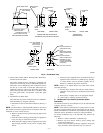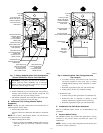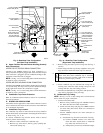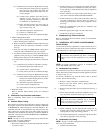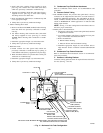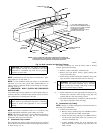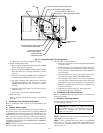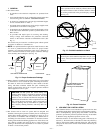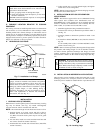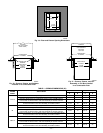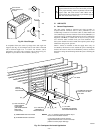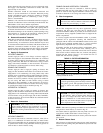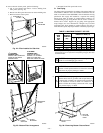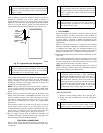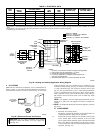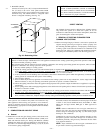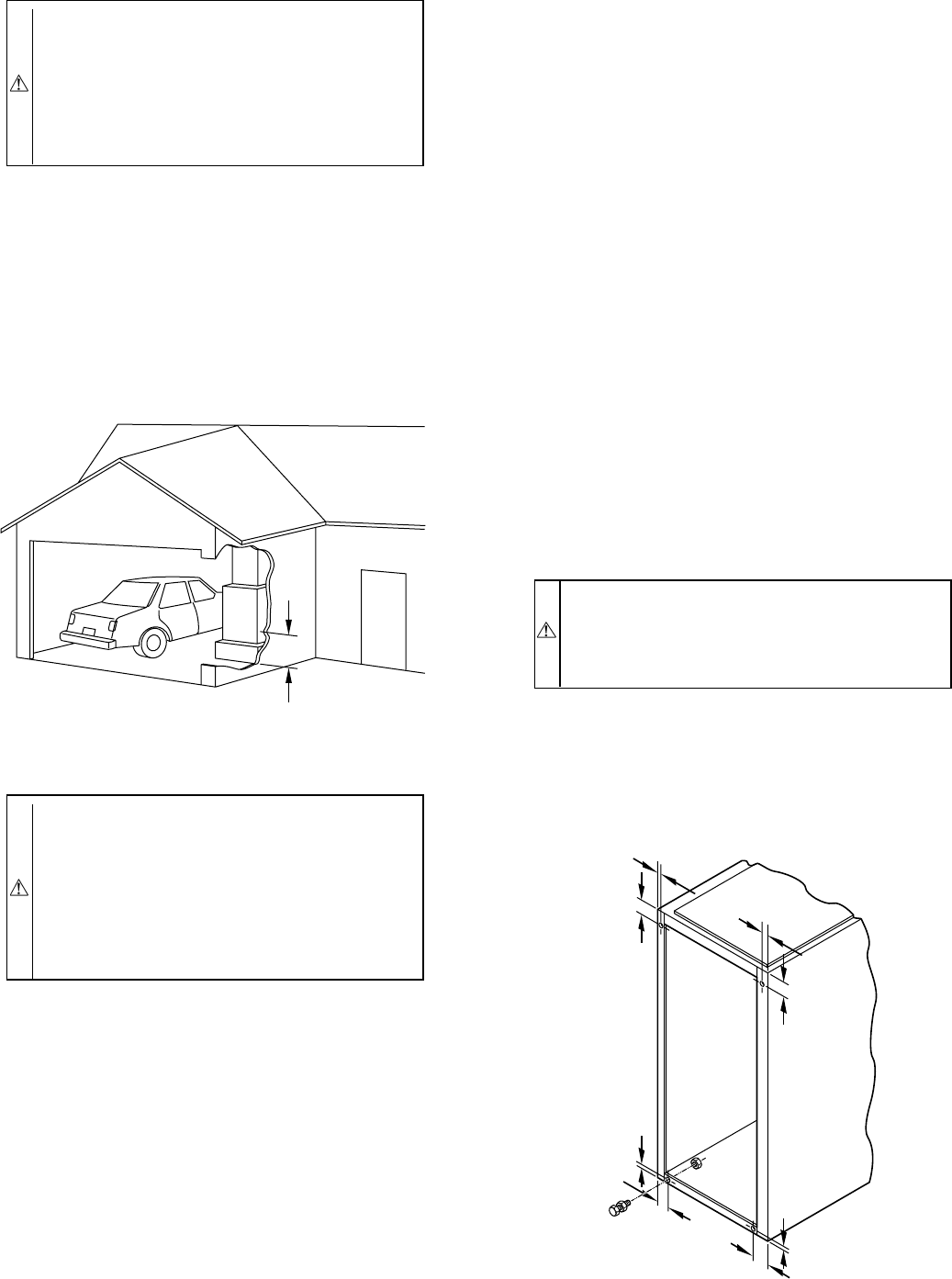
CAUTION: The furnace can operate in the high-heat
mode when certain fault conditions occur. The following
precautions should be taken:
1. Size gas piping based on the high-heat input.
2. Check the high-heat input and adjust it per the main
literature instructions.
NEVER assume the high-heat input rate is not important
for low-heat-only installation.
III. FURNACE LOCATION RELATIVE TO COOLING
EQUIPMENT
The cooling coil must be installed parallel with or on downstream
side of furnace to avoid condensation in heat exchanger. When
installed parallel with a furnace, dampers or other means used to
control flow of air shall be adequate to prevent chilled air from
entering furnace. If dampers are manually operated, they must be
equipped with a means to prevent operation of either unit unless
damper is in full-heat or full-cool position.
IV. HAZARDOUS LOCATIONS
INSTALLATION
I. LEVELING LEGS (IF DESIRED)
When furnace is used in upflow position with side inlet(s), leveling
legs may be desired. (See Fig. 18.) Install field-supplied,
corrosion-resistant 5/16-in. machine bolts and nuts.
NOTE: The maximum length of bolt should not exceed 1-1/2 in.
1. Position furnace on its back. Locate and drill a 5/16-in.
diameter hole in each bottom corner of furnace. (See Fig.
18.) Holes in bottom closure panel may be used as guide
locations.
2. For each hole, install nut on bolt and then install bolt and
nut in hole. (Install flat washer if desired.)
3. Install another nut on other side of furnace base. (Install flat
washer if desired.)
4. Adjust outside nut to provide desired height, and tighten
inside nut to secure arrangement.
NOTE: Bottom closure must be used when leveling legs are used.
See Bottom Closure Panel section.
II. INSTALLATION IN UPFLOW OR DOWNFLOW
APPLICATIONS
NOTE: This furnace is approved for use on combustible flooring
when special base (available from manufacturer) Part No.
KGASB0201ALL is used. Special base in not required when this
furnace is installed on manufacturer’s Coil Assembly Part No.
CD5 or CK5, or Coil Box Part No. KCAKC is used.
1. Determine application being installed from Table 1.
2. Construct hole in floor per dimensions specified in Table 1
and Fig. 19.
3. Construct plenum to dimensions specified in Table 1 and
Fig. 19.
4. If downflow subbase (KGASB) is used, install as shown in
Fig. 20.
If coil assembly CD5 or CK5 or Coil Box KCAKC is used,
install as shown in Fig. 21.
NOTE: Remove furnace perforated, discharge duct flanges when
they interfere with mating flanges on coil on downflow subbase.
To remove furnace perforated, discharge duct flange, use hand
seamers, wide duct pliers or duct flange tool to bend flange back
and forth until it breaks off. Be careful of sharp edges. (See Fig.
22.)
WARNING: Do not bend duct flanges inward as shown
in Fig. 22. This will affect airflow across heat exchangers
and may cause limit cycling or premature heat exchanger
failure. Remove duct flange completely or bend it inward
a minimum of 210° as shown in Fig. 22.
III. INSTALLATION IN HORIZONTAL APPLICATIONS
These furnaces can be installed in either horizontal left or right
discharge position. In a crawlspace, furnace can either be hung
from floor joist or installed on suitable blocks or pad. Furnace can
WARNING: When furnace is installed in a residential
garage, it must be installed so that burners and ignition
sources are located a minimum of 18 in. above floor. The
furnace must be located or protected to avoid physical
damage by vehicles. When furnace is installed in a public
garage, airplane hangar, or other building having a
hazardous atmosphere, unit must be installed in accor-
dance with requirements of National Fire Protection
Association, Inc. (See Fig. 17.)
A93044
Fig. 17—Installation in a Garage
18-IN. MINIMUM
TO BURNERS
Fig. 18—Leveling Legs
A89014
1
3
⁄4″
1
3
⁄4″
1
3
⁄4″
1
3
⁄4″
5
⁄16″
5
⁄16″
5
⁄16″
5
⁄16″
—14—



